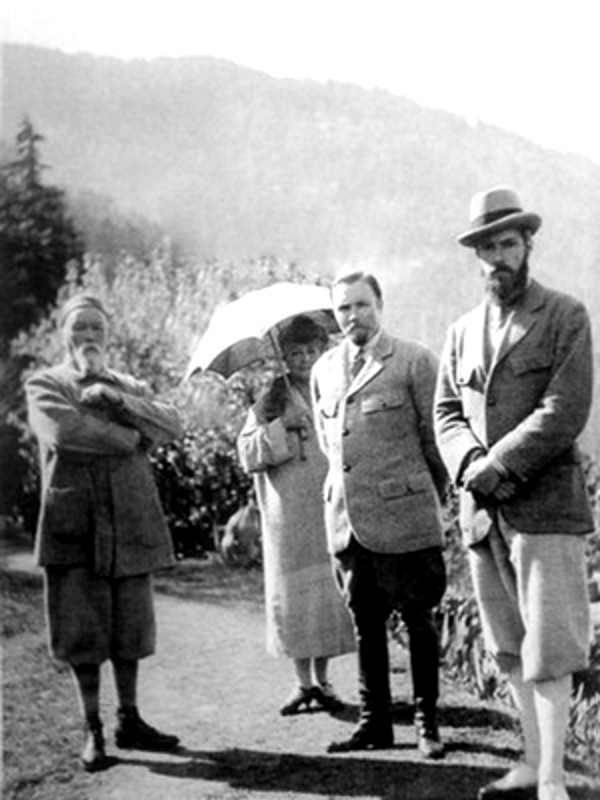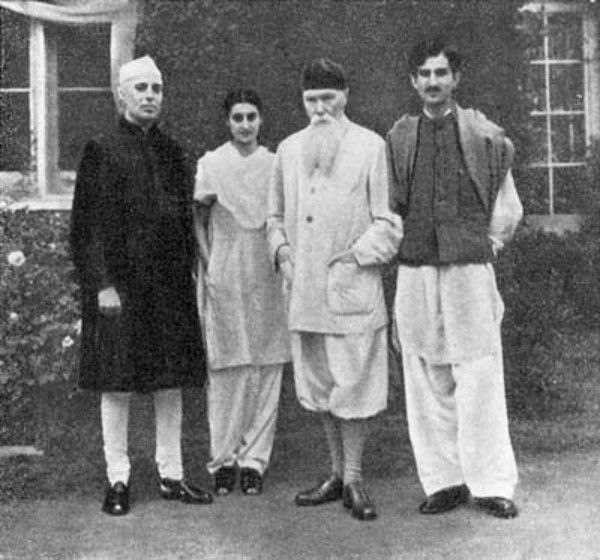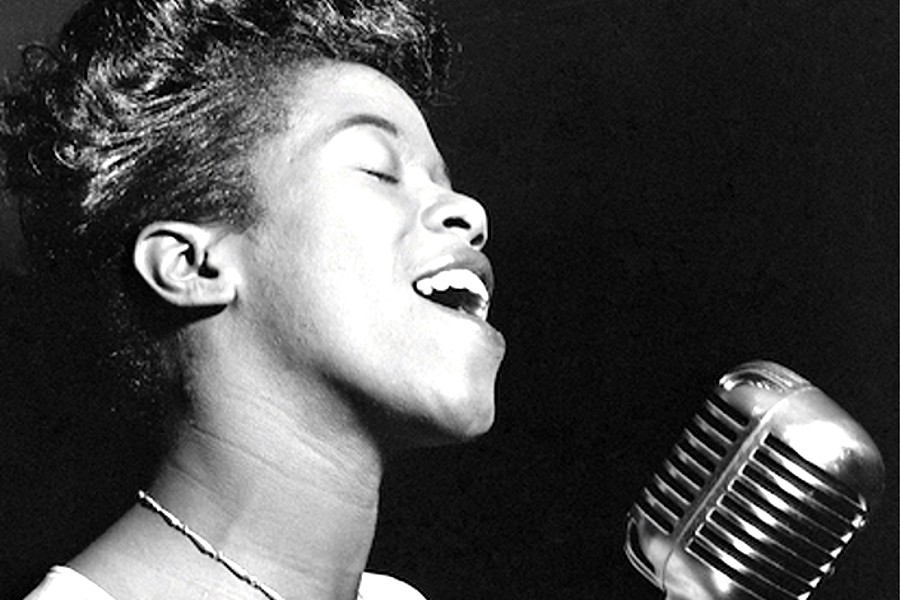 Nicholas Roerich, October 9, 1874 – December 13, 1947, known also as Nikolai Konstantinovich Rerikh – was a Russian-born Harlem painter, writer, archaeologist, theosophist, philosopher, and public figure.
Nicholas Roerich, October 9, 1874 – December 13, 1947, known also as Nikolai Konstantinovich Rerikh – was a Russian-born Harlem painter, writer, archaeologist, theosophist, philosopher, and public figure.
He was influenced by a movement in Russian society around the spiritual. He was interested in hypnosis and other spiritual practices and his paintings are said to have hypnotic expressions.
Born in Saint Petersburg, to a well-to-do notary public Baltic German father and a Russian mother, Roerich lived in various places around the world until his death in Naggar, Himachal Pradesh, India.
Trained as an artist and a lawyer, his main interests were literature, philosophy, archaeology, and especially art.
Roerich was a dedicated activist for the cause of preserving art and architecture during times of war.
He was nominated several times to the longlist for the Nobel Peace Prize.
The so-called Roerich Pact was signed into law by the United States and most nations of the Pan-American Union in April 1935.
Biography
Early life
Raised in late-19th-century St. Petersburg, Roerich enrolled simultaneously at St. Petersburg University and the Imperial Academy of Arts during 1893.
He received the title of “artist” in 1897 and a degree in law the next year. He found early employment with the Imperial Society for the Encouragement of the Arts, whose school he directed from 1906 to 1917.
Despite early tensions with the group, he became a member of Sergei Diaghilev’s “World of Art” society; he was president of the society from 1910 to 1916.
Artistically, Roerich became known as his generation’s most talented painter of Russia’s ancient past, a topic that was compatible with his lifelong interest in archaeology.
He also succeeded as a stage designer, achieving his greatest fame as one of the designers for Diaghilev’s Ballets Russes.
His best-known designs were for Borodin’s Prince Igor (1909 and later productions), and costumes and set for The Rite of Spring (1913), composed by Igor Stravinsky.
Along with Mikhail Vrubel and Mikhail Nesterov, Roerich is considered a major representative of Russian Symbolism in art.
From an early period of his life, he was influenced by Apocrypha and medieval sectarian writings such as the mysterious Dove Book.
Another of Roerich’s artistic subjects was architecture. His acclaimed publication “Architectural Studies” (1904–1905), consisting of dozens of paintings he made of fortresses, monasteries, churches, and other monuments during two long trips through Russia, inspired his decades-long career as an activist on behalf of artistic and architectural preservation.
He also designed religious art for places of worship throughout Russia and Ukraine, most notably the Queen of Heaven fresco for the Church of the Holy Spirit which the patroness Maria Tenisheva built near her Talashkino estate; and the stained glass windows for the Datsan Gunzechoinei during 1913–1915.
His designs for the Talashkino church were so radical that the Orthodox church refused to consecrate the building.
During the first decade of the 1900s and in the early 1910s, Roerich, largely due to the influence of his wife Helena, developed an interest in eastern religions, as well as alternative (to Christianity) belief systems such as Theosophy.
Both Roerichs became avid readers of the Vedantist essays of Ramakrishna and Vivekananda, the poetry of Rabindranath Tagore, and the Bhagavad Gita.
The Roerichs’ commitment to occult mysticism increased steadily. It was especially intense during World War I and the Russian revolutions of 1917, to which the couple, like many Russian intellectuals, accorded apocalyptic significance.
The influence of Theosophy, Vedanta, Buddhism, and other mystical topics can be detected not only in many of Roerich’s paintings but in the many short stories and poems Roerich wrote before and after the 1917 revolutions, including the Flowers of Morya cycle, which begun in 1907 and completed in 1921.
Revolution, emigration, and the United States
After the February Revolution of 1917 and the end of the czarist regime, Roerich, a political moderate who valued Russia’s cultural heritage more than ideology and party politics, had an active part in artistic politics.
With Maxim Gorky and Aleksandr Benois, he participated with the so-called “Gorky Commission” and its successor organization, the Arts Union (SDI).
Both attempted to gain the attention of the Provisional Government and Petrograd Soviet on the need to form a coherent cultural policy and, most urgently, protect art and architecture from destruction and vandalism.
At the same time, illness forced Roerich to leave the capital and reside in Karelia, the district bordering Finland.
He had already quit the presidency of the World of Art society, and he now quit the directorship of the School of the Imperial Society for the Encouragement of the Arts.
After the October Revolution and the acquisition of power of Lenin’s Bolshevik Party, Roerich became increasingly discouraged about Russia’s political future. During early 1918, he, Helena, and their two sons George and Svetoslav emigrated to Finland.
Two unresolved historical debates are associated with Roerich’s departure. First, it is often claimed that Roerich was a major candidate to direct a people’s commissariat of culture (the Soviet equivalent of a ministry of culture) which the Bolsheviks considered establishing during 1917–1918, but that he refused to accept the job. In fact, Benois was the most likely choice to direct any such commissariat.
It seems that Roerich was a preferred choice to manage its department of artistic education; the topic is rendered moot by the fact that the Soviets elected not to establish such a commissariat.
Second, when Roerich later wished to reconcile with the USSR, he maintained that he had not left Soviet Russia deliberately, but that he and his family, living in Karelia, had been isolated from their homeland when the civil war began in Finland.
However, Roerich’s extreme hostility to the Bolshevik regime – prompted not so much by a dislike of communism as by his revulsion at Lenin’s ruthlessness and his fear that Bolshevism would result in the destruction of Russia’s artistic and architectural heritage – was amply documented.
He illustrated Leonid Andreyev’s anti-communist polemic “S.O.S.” and had a widely published pamphlet, “Violators of Art” (1918–1919). Roerich believed that “the triumph of Russian culture would come about through a new appreciation of ancient myth and legend”.
After some months in Finland and Scandinavia, the Roerichs relocated to London, arriving in mid-1919. Engrossed with Theosophical mysticism, they now had millenarian expectations that a new age was imminent, and they wished to travel to India as soon as possible.
They joined the English-Welsh chapter of the Theosophical Society. It was in London, in March 1920, that the Roerichs founded their own school of mysticism, Agni Yoga, which they referred to also as “the system of living ethics.”
To earn passage to India, Roerich worked as a stage designer for Thomas Beecham’s Covent Garden Theatre, but the enterprise ended unsuccessfully in 1920, and the artist never received full payment for his work.
Among the notable people Roerich befriended while in England were the famed British Buddhist Christmas Humphreys, philosopher-author H. G. Wells, and the poet and Nobel laureate Rabindranath Tagore (whose grand-niece Devika Rani would later marry Roerich’s son Svetoslav).
A successful exhibition in London resulted in an invitation from a director at the Art Institute of Chicago, offering to arrange for Roerich’s art to tour the United States. During the autumn of 1920, the Roerichs traveled to America by sea.
The Roerichs remained in the United States from October 1920 until May 1923. A large exhibition of Roerich’s art, organized partly by U.S. impresario Christian Brinton and partly by the Chicago Art Institute, began from where he lived at 319 West 107th Street (near Riverside Drive) in Harlem, New York in December 1920 and toured the country, to San Francisco and back, during 1921 and early 1922.
Roerich befriended acclaimed soprano Mary Garden of the Chicago Opera and received a commission to design a 1922 production of Rimsky-Korsakov’s The Snow Maiden for her. During the exhibition, the Roerichs spent significant amounts of time in Chicago, New Mexico, and California.
Politically, Roerich was at first anti-Bolshevik. He gave lectures and wrote articles to White Russian populations in which he criticized the Soviet Union. However, his aversion to Communism – “the impertinent monster that lies to humanity” – changed in America.
Roerich claimed that his spiritual masters, the “Mahatmas” in the Himalayas, were communicating telepathically with him, through his wife, Helena, who was a mystic and a clairvoyant.
These beings from an esoteric Buddhist community in India were said to have told Roerich that Russia was destined for a mission on Earth.
This led him to formulate his “Great Plan”, envisaging the unification of millions of Asian peoples through a religious movement using the Future Buddha, or Maitreya, into a “Second Union of the East.”
Here, the King of Shambhala would, following the Maitreya prophecies, make his appearance to fight a great battle against all evil forces on Earth.
Roerich understood this as “perfection towards Common Good”. This new polity was to include southwestern Altai, Tuva, Buryatia, Outer and Inner Mongolia, Xinjiang and Tibet, with its capital situated in “Zvenigorod”, the “City of Tolling Bells”, which was to be built at the foot of Mount Belukha in Altai.
According to Roerich, the same Mahatmas revealed to him in 1922 that he was an incarnation of the Fifth Dalai Lama.
In 1923, Roerich, the “practical idealist”, set out to the Himalayas with his wife and son Yuri. Roerich initially settled in Darjeeling, in the same house where the 13th Dalai Lama had stayed during his exile in India.
Roerich spent his time painting the Himalayas with visitors such as F. M. Bailey, Lady Lytton, and members of the 1924 British Everest Expedition, as well as Sonam Wangfel Laden La, Kusho Doring, and Tsarong Shape, influential Tibetans.
According to British intelligence, lamas from the Moru monastery recognized Roerich as the incarnation of the Fifth Dalai Lama due to a mole pattern on his right cheek.
It was during his stay in the Himalayas that Roerich learned about the flight of the 9th Panchen Lama, which he interpreted as the fulfillment of the Matreiya prophecies and the bringing about of the Age of Shambhala.
In 1924, the Roerichs returned to the West. On his way to America, Roerich stopped at the Soviet embassy in Berlin, where he told the local plenipotentiary about a Central Asian expedition he wanted to take. He asked for Soviet protection on his way, and shared his impressions of politics in India and Tibet.
Roerich commented on the “occupation of Tibet by the British”, claiming that they “infiltrate in small parties… conduct extensive anti-Soviet propaganda” by talking about “anti-religious activity of the Bolsheviks”.
The plenipotentiary later pointed out to one of Roerich’s old university classmates, Chicherin, that he had “absolutely pro-Soviet leanings, which looked somewhat Buddho-Communistic”, and that his son, who spoke 28 Asian languages, helped him in gaining good favor with the Indians and Tibetans.
The Roerichs settled in New York City, which became the base of their many American operations.
They founded several institutions during these years: Cor Ardens (“Flaming Heart”) and Corona Mundi (“Crown of the World”), both of which were meant to unite artists around the globe in the cause of civic activism; the Master Institute of United Arts, an art school with a versatile curriculum, and the eventual home of the first Nicholas Roerich Museum; and an American Agni Yoga Society.
They also joined various theosophical societies; their activities with these groups dominated their lives.
Asian Expedition (1925–1929)
After leaving New York, the Roerichs – together with their son George and six friends – began the five-year-long ‘Roerich Asian Expedition’ that, in Roerich’s own words: “started from Sikkim through Punjab, Kashmir, Ladakh, the Karakoram Mountains, Khotan, Kashgar, Qara Shar, Urumchi, Irtysh, the Altai Mountains, the Oyrot region of Mongolia, the Central Gobi, Kansu, Tsaidam, and Tibet” with a detour through Siberia to Moscow in 1926.

The Roerichs’ Asian expedition attracted attention from the foreign services and intelligence agencies of the USSR, the United States, Great Britain, and Japan.
In fact, prior to this expedition, Roerich himself solicited the help of the Soviet government and Bolshevik secret police to assist him in his expedition, promising in return to monitor British activities in the area, but received only a lukewarm response from Michail Abramowitsch Trilisser, chief of the Soviet foreign intelligence at that time.
The Bolsheviks assisted Roerich with logistics while he was traveling through Siberia and Mongolia. However, they did not commit themselves to his reckless utopian project of the Sacred Union of the East – a spiritual utopia that boiled down to Roerich’s ambitious attempts to stir the Buddhist masses of inner Asia to create a highly spiritual cooperative commonwealth under the patronage of Bolshevik Russia.
The official mission of his expedition, as Roerich put it, was to act as the embassy of Western Buddhism to Tibet.
To the Western media, it was presented as an artistic and scientific enterprise.
Between the summer of 1927 and June 1928, the expedition was thought to have been lost, as communication with them had ceased. They had, in fact, been attacked in Tibet.
Roerich wrote that only the “superiority of our firearms prevented bloodshed… In spite of our having Tibet passports, the expedition was forcibly stopped by Tibetan authorities.”
They were detained by the government for five months and forced to live in tents in sub-zero conditions and to subsist on meagre rations. Five men of the expedition died during this time.
In March 1928 they were allowed to leave Tibet and trekked south to settle in India, where they founded a research center, the Himalayan Research Institute.
In 1929 Roerich was nominated for the Nobel Peace Prize by the University of Paris.
He received two more nominations in 1932 and 1935. His concern for peace resulted in his creation of the Pax Cultura, the “Red Cross” of art and culture.
His work for this cause also resulted in the United States and the twenty other nations of the Pan-American Union signing the Roerich Pact, an early international instrument protecting cultural property, on April 15, 1935 at the White House.
Manchurian expedition
In 1934–1935, the U.S. Department of Agriculture, then headed by Roerich admirer Henry A. Wallace, sponsored an expedition by Roerich and USDA scientists H. G. MacMillan and James F. Stephens to Inner Mongolia, Manchuria, and China. The expedition’s purpose was to collect seeds of plants that prevented soil erosion.
The expedition consisted of two parts. In 1934, they explored the Greater Khingan mountains and Bargan plateau in western Manchuria.
In 1935, they explored parts of Inner Mongolia: the Gobi Desert, Ordos Desert, and Helan Mountains.
The expedition found almost 300 species of xerophytes, collected herbs, conducted archeological studies, and found antique manuscripts of great scientific importance.
Later life and World War II
Roerich was in India during the Second World War, where he painted Russian epic heroic and saintly themes, including Alexander Nevsky, The Fight of Mstislav and Rededia, and Boris and Gleb.
In 1942, Roerich received Jawaharlal Nehru and his daughter, Indira Gandhi, at his house in Kullu.[citation needed] Together they discussed the fate of the new world: “We spoke about Indian–Russian cultural association […] it is time to think about useful and creative co-operation”.
 Indira Gandhi would later recall several days spent together with Roerich’s family: “That was a memorable visit to a surprising and gifted family where each member was a remarkable figure in himself, with a well-defined range of interests. … Roerich himself stays in my memory.
Indira Gandhi would later recall several days spent together with Roerich’s family: “That was a memorable visit to a surprising and gifted family where each member was a remarkable figure in himself, with a well-defined range of interests. … Roerich himself stays in my memory.
He was a man with extensive knowledge and enormous experience, a man with a big heart, deeply influenced by all that he observed”.
During the visit, “ideas and thoughts about closer co-operation between India and USSR were expressed. Now, after India wins independence, they have got its own real implementation.
And as you know, there are friendly and mutually-understanding relationships today between both our countries”.
In 1942, the American–Russian Cultural Association (ARCA) was created in New York. Its active participants were Ernest Hemingway, Rockwell Kent, Charlie Chaplin, Emil Cooper, Serge Koussevitzky, and Valeriy Ivanovich Tereshchenko.
The Association’s activity was welcomed by scientists such as Robert Millikan and Arthur Compton.
He had a lengthy correspondence with Henry Wallace, the 1948 Progressive Party candidate for US President.
Death
Roerich died in Kullu on December 13, 1947.
Cultural legacy
In the 21st century, the Nicholas Roerich Museum in New York City is a major institution for Roerich’s artistic work. Numerous Roerich societies continue to promote his theosophical teachings worldwide.
His paintings can be seen in several museums including the Roerich Department of the State Museum of Oriental Arts in Moscow; the Roerich Museum at the International Centre of the Roerichs in Moscow; the Russian State Museum in Saint Petersburg, Russia; a collection in the Tretyakov Gallery in Moscow; a collection in the Art Museum in Novosibirsk, Russia; an important collection in the National Gallery for Foreign Art in Sofia, Bulgaria; a collection in the Art Museum in Nizhny Novgorod Russia; National Museum of Serbia; the Roerich Hall Estate in Naggar, India; the Sree Chitra Art Gallery, Thiruvananthapuram, India; in various art museums in India; and a selection featuring several of his larger works in The Latvian National Museum of Art.
Roerich’s biography and his controversial expeditions to Tibet and Manchuria have been examined recently by a number of authors, including two Russians, Vladimir Rosov and Alexandre Andreyev, two Americans (Andrei Znamenski and John McCannon), and the German Ernst von Waldenfels.
A series of his studies on the Himalayan Ranges-donated by the artist’s son (36 works specifically) are even showcased in the Nicholas Roerich Gallery of the Karnataka Chitrakala Parishath Museum based in Bangalore, India.
The hypnotic, immersive nature of his works truly absorbs the onlooker, leaving one with a sense of peace and tranquility as one moves with the series through the gallery.
H. P. Lovecraft refers numerous times to the “strange and disturbing Asian paintings of Nicholas Roerich” in his Antarctic horror story At the Mountains of Madness.
Roerich was awarded Order of St. Sava. The minor planet 4426 Roerich in the Solar System was named in honor of Roerich.
In June 2013 during Russian Art Week in London, Roerich’s Madonna Laboris sold at auction at Bonhams shop for £7,881,250, including the buyer’s premium, making it the most valuable painting ever sold at a Russian art auction.
Photo credit: 1) Nicholas Roerich. 2) Nicholas Roerich and family. 3) Jawaharlal Nehru, Indira Gandhi, Nicholas Roerich, and Mohammad Yunus. (Roerich’s estate, Kullu). 4) Youtube video.
Become a Harlem Insider!
By submitting this form, you are consenting to receive marketing emails from: Harlem World Magazine, 2521 1/2 west 42nd street, Los Angeles, CA, 90008, https://www.harlemworldmagazine.com. You can revoke your consent to receive emails at any time by using the SafeUnsubscribe® link, found at the bottom of every email. Emails are serviced by Constant Contact








